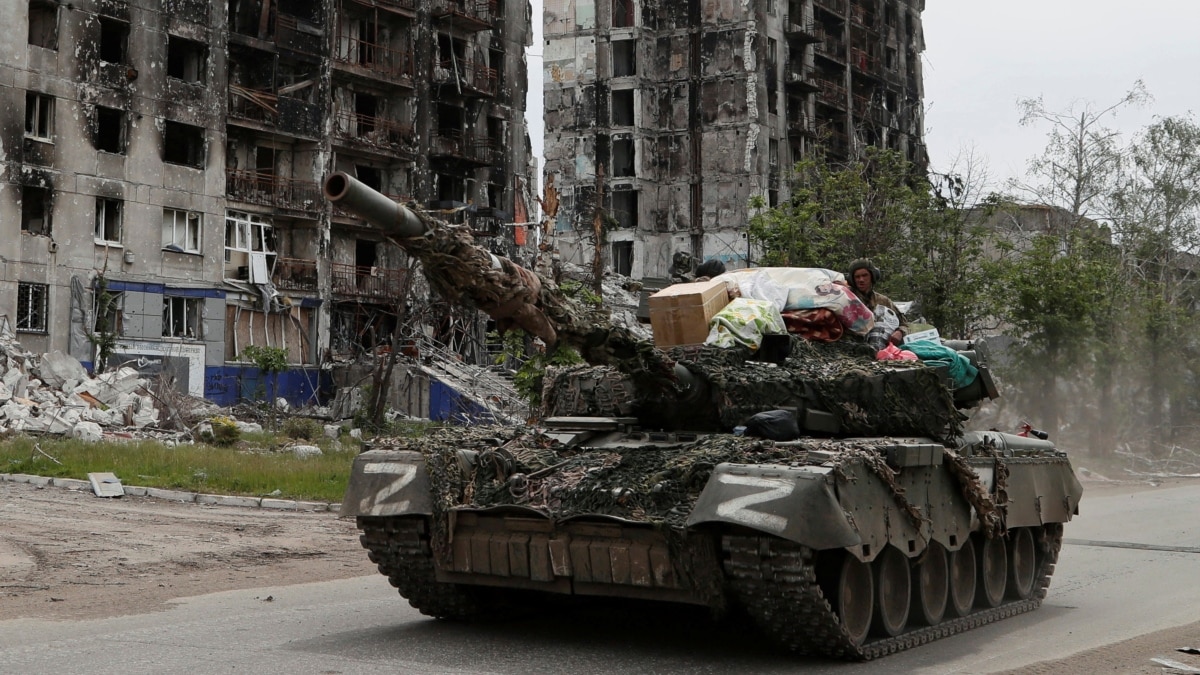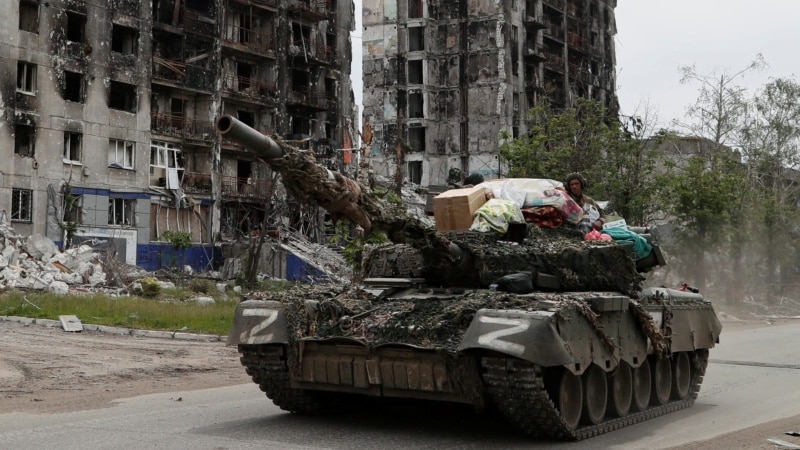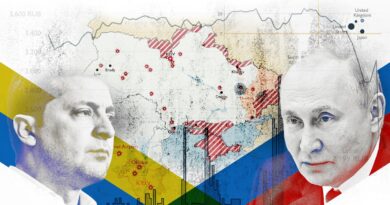2023: How Russia Played Victim of Western Aggression in Ukraine

Russia remained locked in a diplomatic and military stalemate during 2023, largely isolated from the world and unable to claim any significant victory in the war it waged against Ukraine.
This situation has been exacerbated by the large losses in personnel, military equipment, and ammunition. The replenishment of human resources meant the Kremlin had to take highly unpopular measures like military mobilization while the acceleration of military production was hampered by Western sanctions, limiting the entry of investments and high technologies into Russia.
In such conditions, the Kremlin had to redesign its hybrid warfare and try influencing foreign public opinion to achieve a temporary truce and lift sanctions “to buy time to reconstitute for future offensive operations.”
As part of its hybrid warfare, the Kremlin’s propaganda tried to convince domestic and foreign audiences that Russia is not an aggressor in the war with Ukraine but a victim and that the West attacked Russia by using Ukraine.
Below are most frequently repeated false and misleading statements on this topic that Polygraph.info has tracked and refuted in 2023:
What came out of Putin’s mouth
Claiming victimhood was a routine talking point of Russian President Vladimir Putin’s public speeches throughout the year.
In June, for example, Putin falsely claimed that since the day it gained independence in December 1991, Ukraine was never actually independent but controlled by the West, which nurtures a hostile “anti-Russia” attitude.
In fact, Ukraine fought against Russia’s colonial dominion for centuries and the latest war only added to existing historical grievances.
Since February 2022, by the Ukrainian estimates, Russia has killed at least 30,000 Ukrainian civilians. The United Nations verified over 10,000 civilian deaths, noting that actual numbers are likely significantly higher. Thousands are missing and millions are homeless. Russia destroyed dozens of Ukrainian cities, towns and villages, and kidnapped thousands of Ukrainian children.
As for controlling Ukraine: The country had six presidents since 1991. Only three of them were pro-Western; two had oscillated between Moscow and the West, and one was strictly pro-Russian. From 1991 to 2018, Russia has been Ukraine’s key economic partner.
The North Atlantic Treaty Organization (NATO) remained another villain in Putin’s tales. The Russian leader routinely blamed NATO for his decision to attack Ukraine. He repeatedly claimed that despite the promise given to Russia in 1990, NATO expanded to the East and “reached Ukraine.”
There was no such promise. Since its establishment in 1949, NATO has never changed its “open door policy.” The United States, Europe and Russia have never signed any treaty or agreement containing provisions limiting NATO membership for Eastern European countries.
But blaming the West and NATO for the war was not enough. Putin went further to claim that Russia never “unleashed” the war against Ukraine, but that it was Ukraine who did that.
Russia started the war on Ukraine in 2014 when Moscow annexed Ukraine’s Crimean Peninsula and then sent clandestine military units to secretly seize government buildings in Donbas, effectively launching a power grab of Ukraine’s Donetsk and Luhansk regions. Ukraine responded to Russian active measures by launching what Kyiv called an “anti-terrorist operation.” Subsequently, Russia sent regular troops to Donbas and annexed it.
On February 24, 2022, Putin himself announced a full-scale military invasion of Ukraine. It went far beyond the Donbas: Russian missile and bomb attacks were carried out on the largest cities of Ukraine, and tank columns surrounded the capital of the country, Kyiv.
Russia had been planning the war for months while simultaneously carrying out a massive disinformation campaign, denying and concealing preparations for the invasion.
Putin’s verbal attacks on Ukraine also include claiming that Ukrainians routinely blow up, rape and kill fellow citizens under instructions from their “Western curators” like in the cases of Bucha, Mariupol, or the Kakhovka dam.
By the time it exploded, the Kakhovka dam had been under Russian control for more than 15 months. There is an abundance of evidence refuting Russia’s claims that the station was hit by Ukrainian missiles or artillery shelling. Experts conclude that an underground explosion was the most likely cause of the destruction that led to massive flooding and the suffering of thousands of Ukrainian civilians.
What did Putin’s press secretary say
Kremlin’s spokesman Dmitry Peskov falsely claimed that “Russian military infrastructure has never moved toward Western Europe, there has always been a movement in the opposite direction.”
Since Putin came to power in 2000, Russia has built dozens of new military bases and reinvigorated Soviet military installations along its borders with Western Europe. In 2014, Russia seized and began using several Ukrainian military bases in occupied Crimea and Donbas.
Russia used the war against Ukraine to push Moscow’s military power westward. In 2023, Russia began stationing tactical nuclear weapons in Belarus, which borders three NATO countries — Poland, Lithuania, and Latvia.
What did Putin’s defense minister say
Russian Defense Minister Sergey Shoigu claimed in February that the Ukraine Defense Contact Group, also known as the Ramstein Group, openly called on Ukraine to seize Russian territories.
A coalition of 54 countries allied to aid Ukraine’s fight against Russian aggression, the Ramstein Group did not call on Ukraine to occupy Russian territories. Indeed, the group introduced firm restrictions on targets of the heavy weapons they supplied, including a ban on striking internationally recognized Russian territory.
What did Putin’s foreign minister say
Russia’s Foreign Minister Sergei Lavrov went further in attacking the Ramstein Group, comparing it to “Napoleon… and Hitler,” and claiming the group’s goal is to eliminate the Russian people.
The coalition has never made any statements about the destruction, in whole or in part, of Russia, ethnic Russians or Russian citizens.
What did Putin’s journalists say
Columnist for Moskovsky Komsomolets, one of the oldest political newspapers in Russia, Dmitry Popov reported that “U.S. National Security Advisor Jake Sullivan ordered Ukraine to hit Crimea.”
Sullivan told CNN that the United States, by supplying weapons, does “not enable Ukraine with U.S. systems, Western systems, to attack Russia.” However, he noted, given that “Crimea is Ukraine,” the United States did “not place limitations on Ukraine being able to strike on its [own] territory within its internationally recognized borders.”
What did Putin’s textbooks say
Russian presidential rhetoric is often printed in textbooks used to teach revisionist history to students in schools and colleges, including in occupied Ukraine.
Russia’s two latest textbooks for contemporary Russian history and world history mirror Kremlin propaganda and disinformation.
One history textbook, for example, states that the United States is the main beneficiary of the Russian-Ukrainian war because America “managed to impose their expensive gas and other resources on Europe.”
In fact, since Russia invaded Ukraine in February 2022, the share of American liquefied natural gas in European imports has been declining, according to Eurostat, the statistical office of the European Union.
“As for liquefied natural gas, Russia (18.1%) was the EU’s second-largest supplier, behind the United States (48.6%), in the first quarter of 2022. Fast-forward to the first quarter of 2023, the share of Russia dropped by 4.9 pp. At the same time, the shares of Norway (+6.5 pp), Qatar, and Algeria (both +2.4 pp) all increased while the share of the United States dropped by 8.4 pp.”
Another chapter teaches that the United States is forcing Ukraine to fight the Russian invasion and that America “is determined to fight to the last Ukrainian.”
However, public opinion polls show that an overwhelming majority of Ukrainians believe that “victory” for the country means “the liberation of all its territories, including Crimea and occupied Donbas.” One survey showed that respondents’ confidence in victory is explained by “citizens’ awareness of the high threat of extermination of the entire nation in the event of a military defeat.”
This article has been archived for your research. The original version from Polygraph.info can be found here.



